With spring migration and the breeding season fast approaching at Audubon’s coastal nesting sanctuaries, our staff have been busy reviewing data and trends from the previous year. This helps us know what areas birds are using, what threats they are facing, and if there are any management actions we can take to help them be more successful.
The Cape Fear River is one of North Carolina’s most important areas for nesting American Oystercatchers, hosting about 100 pairs across its marshes and dredge islands. In what is an increasing trend, last nesting season proved difficult for many oystercatcher parents on the river.
Fourteen oystercatcher pairs nested on Ferry Slip Island alone. This dredge island is a popular and successful breeding ground for oystercatchers, producing eight fledglings last summer. But an additional 33 monitored pairs around the river didn’t do as well, with only ten fledglings between them.
For those pairs that weren’t as successful, our coastal team, led by Coastal Biologist Lindsay Addison, began using trail cameras to try to detect the causes of failure—which can be difficult to assess with these territorial birds.
“There are several factors that make it hard to pinpoint the cause of a nest’s failure,” Addison said. “On barrier island beaches where mammals are a threat, there will usually be tracks to suggest the reason a nest was lost, but on the Cape Fear River’s sandy dredge islands, the predators are mostly other birds. And on the marsh islands, the oystercatchers’ nests are laid on shell or wrack which don't leave as much of an impression. And, even if you have clear signs of flooding, the nest could have been lost prior to another cause.”
These large shorebirds have an unmistakable long orange bill and mainly feed on shellfish—especially oysters. A tell-tale sign of a nearby oystercatcher nest is handfuls of opened shells scattered around the shore. The adults fly in with mussels and open them in front of their chicks.
They nest on shallow scrapes in the sand or shell, sometimes lined with pebbles or other small objects, usually on marshy islands above the high tide mark. But high tides can be hard to predict, with higher high tides occurring all along the coast, oystercatchers have been known to lose nests during extreme weather events or as a result of wakes from large shipping vessels along the river.
Among the challenges the cameras captured were a ship wake washing eggs out of a nest (one of the parents was able to roll them back into place), a Laughing Gull flying off with an egg, and a Bald Eagle snacking on a chick just as it was hatching.
By understanding some of the challenges faced by oystercatchers along the coast we hope to be able to better protect them and adapt management efforts so they can be more successful in the future. “If you can’t show what is happening to the resource you want to protect, it’s hard to justify work to address the problem, so this helps us identify management actions,” said Addison. But some threats are unavoidable, as our trail camera shows.
Threats Facing Oystercatcher Families on the Cape Fear River Last Summer
Ships —The Cape Fear River is an important transportation route for many commercial vessels, traveling to and from the Port of Wilmington daily. The river is also home to 25 percent of the state's coastal nesting waterbirds, including large colonies of White Ibis, Brown Pelicans, and Royal and Sandwich terns—all of which are impacted by the large wakes created by these ships. In the image below you can see a vessel passing by the oystercatcher nest.
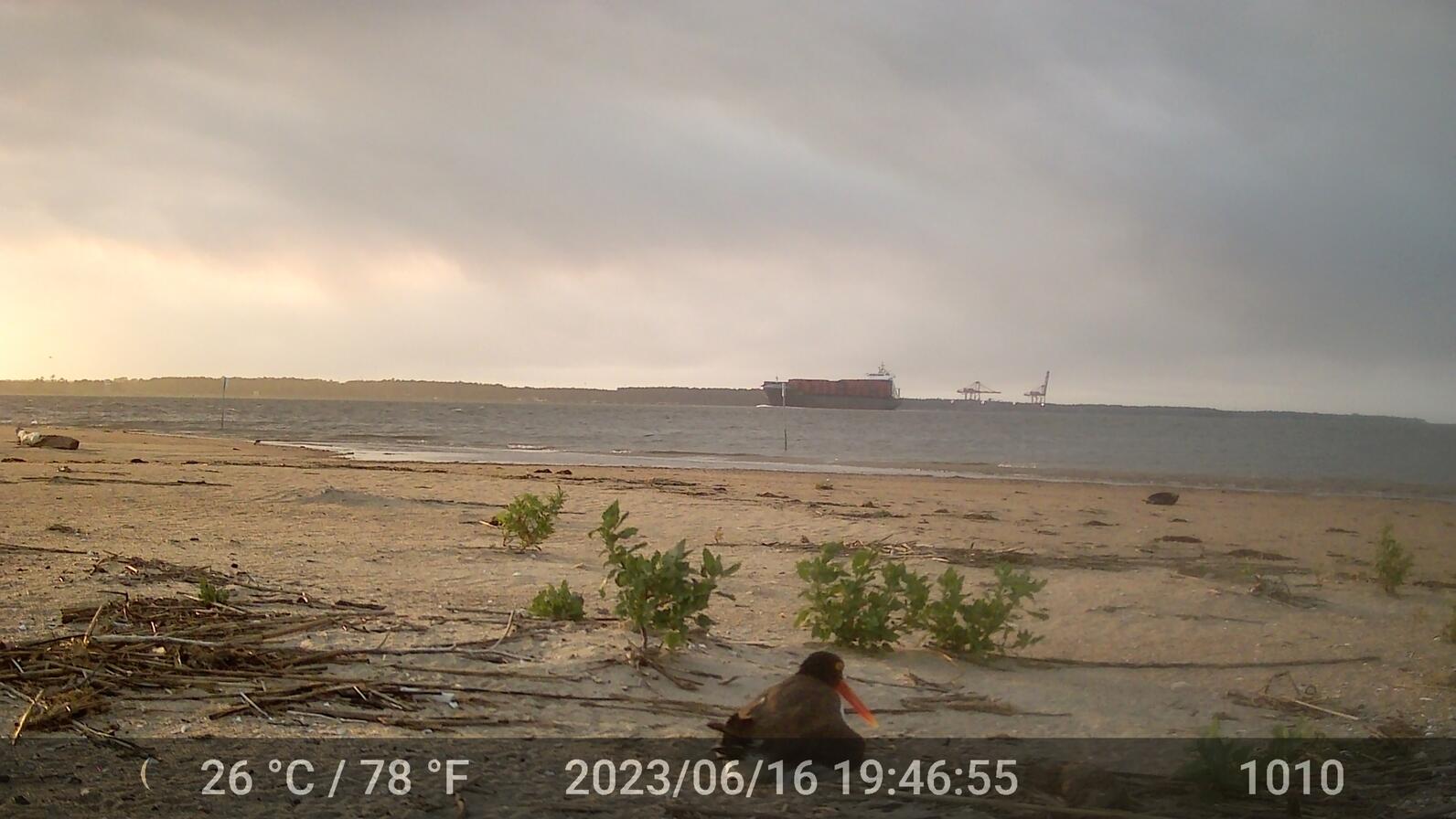
Here you can see the result of the large wakes that can wash away nests. In this instance, one of the oystercatcher parents was able to roll the eggs back into place but that is not always the case. Advocating for the recognition of impacts to nesting birds, and other wildlife, is an important part of Audubon North Carolina’s work on the Cape Fear River.

Bald Eagle —This majestic bird, often known as a fierce predator, will also happily feed on carrion like dead fish, steal food from Ospreys, and gobble up small birds like this hatching oystercatcher chick. Unfortunately for the parents, there’s not much they can do when a big bird like this shows up for a snack. When possible, predator perches can be removed from nesting areas to limit raptors’ opportunities to swoop in for a meal.
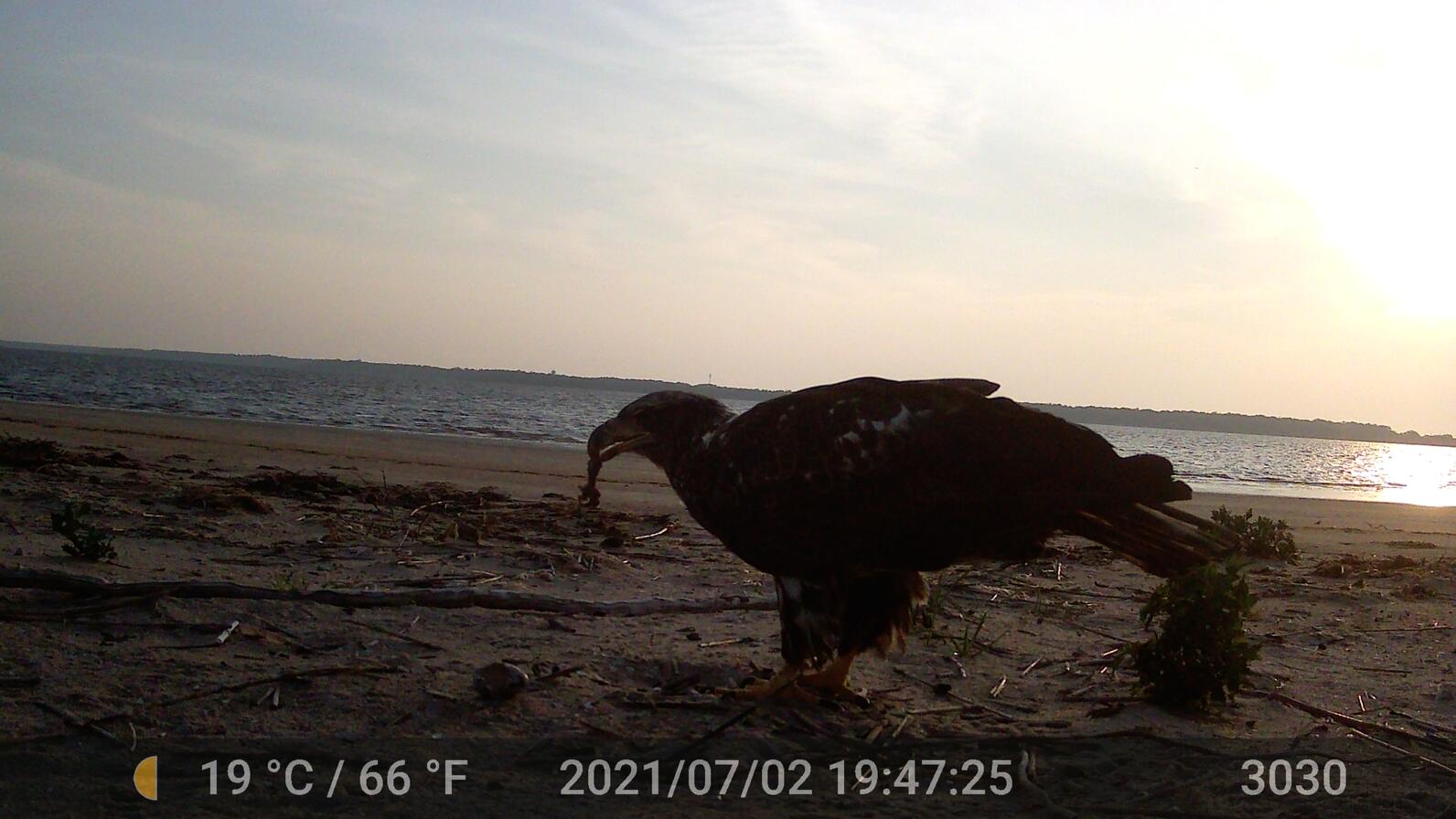
Smoke — Our trail camera was able to pick up smoke from the Green Swamp Nature Preserve fire in Brunswick County. Prescribed burns are incredibly beneficial to the health of ecosystems like the Green Swamp Preserve, but this one didn’t go as expected. Fortunately, the oystercatchers incubated through the smoky conditions.
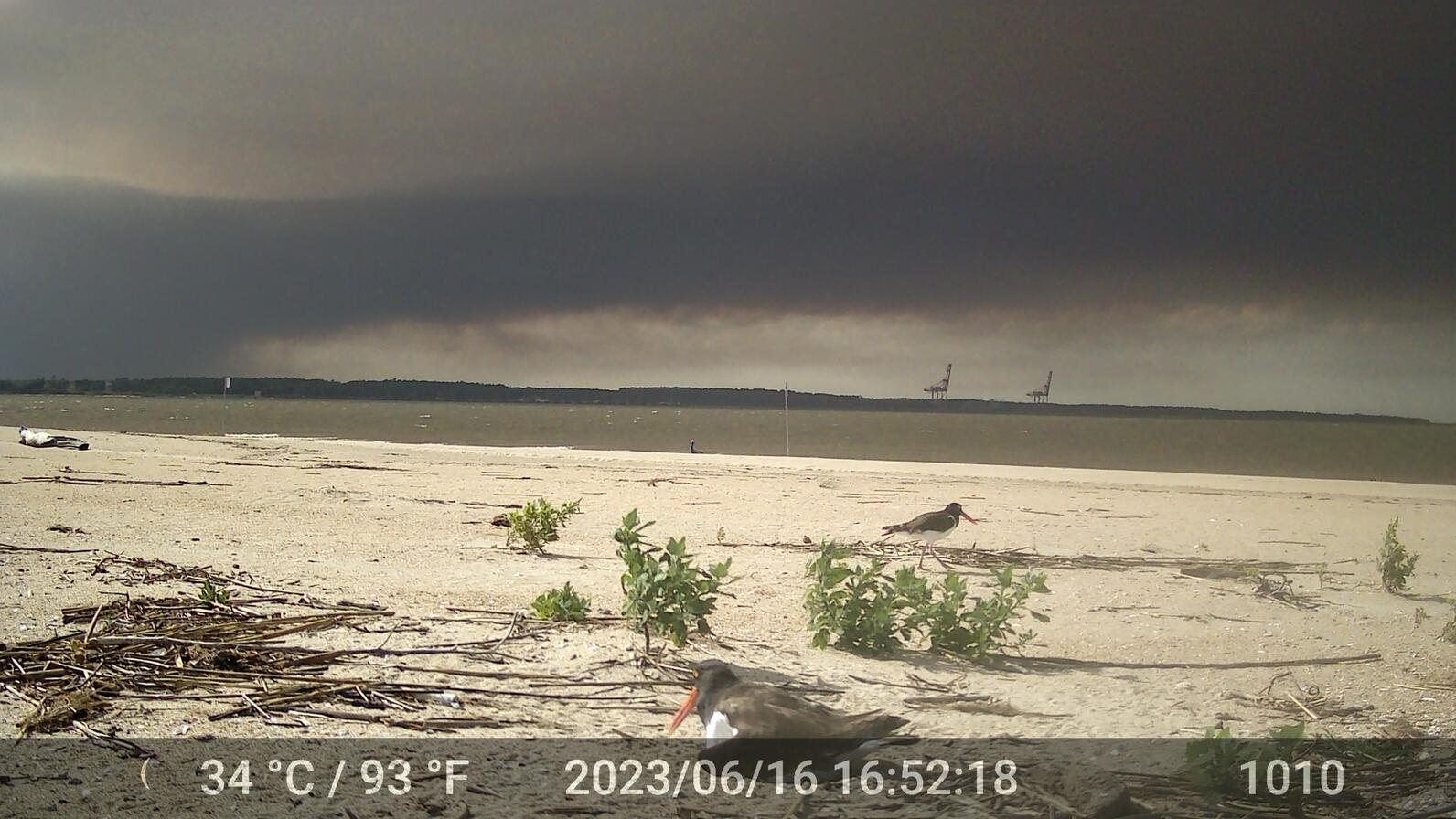
Gulls — A few gull species were spotted snacking on unhatched eggs. In this trail camera photo, you can see a Laughing Gull flying off with an egg in its beak. Oystercatcher parents can be frightened away from the nest for several reasons, and this gull was quick to swoop in for a bite on one such occasion.
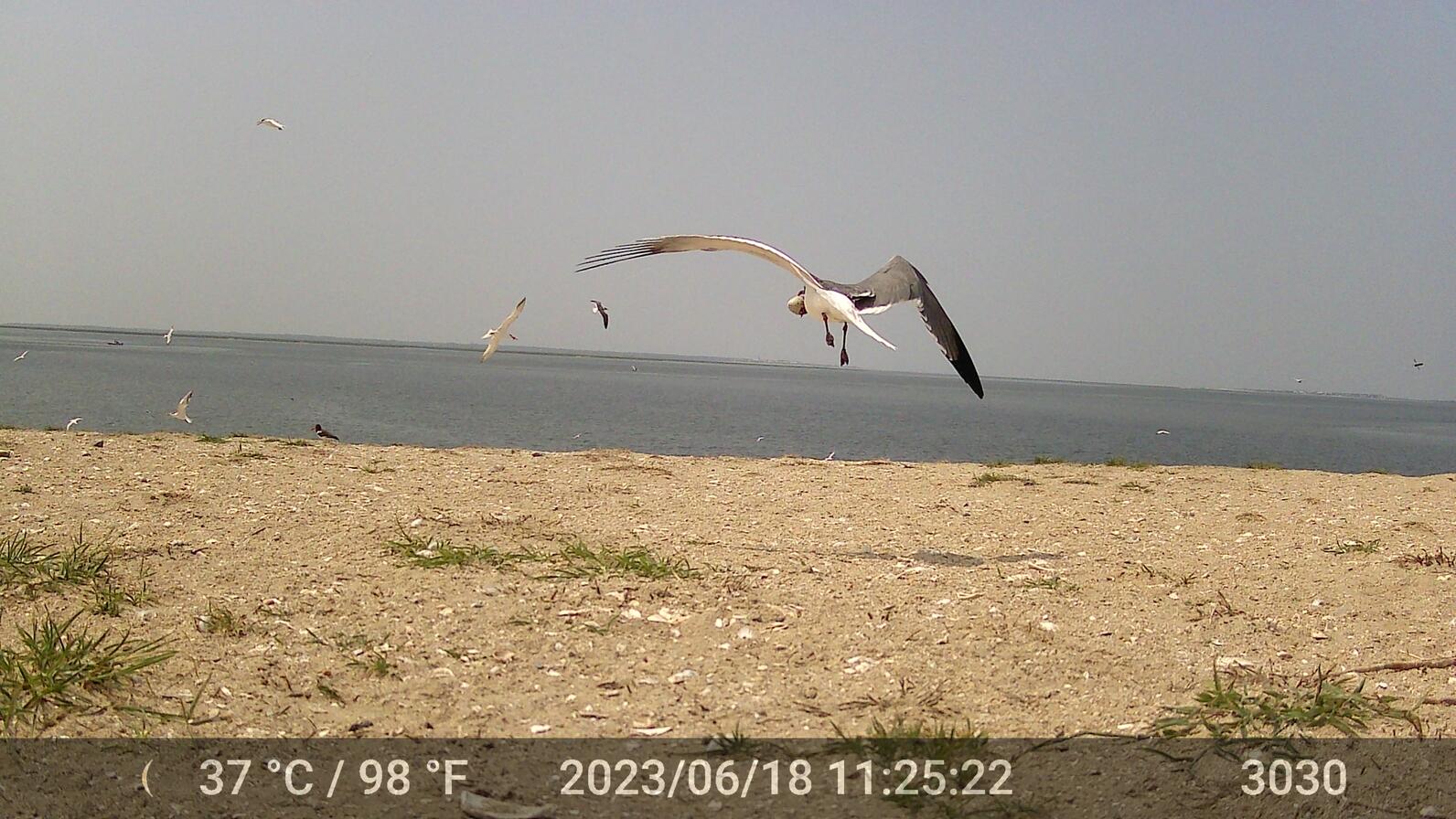
Another gull can be seen checking out the untended nest in this photo. Birds can easily be spooked from nests if people come too close, predators are nearby, or by ship wakes, among many other reasons. Preventing human disturbance at nesting sites and managing habitat to attract fewer breeding gulls improves oystercatchers’ chances of survival.
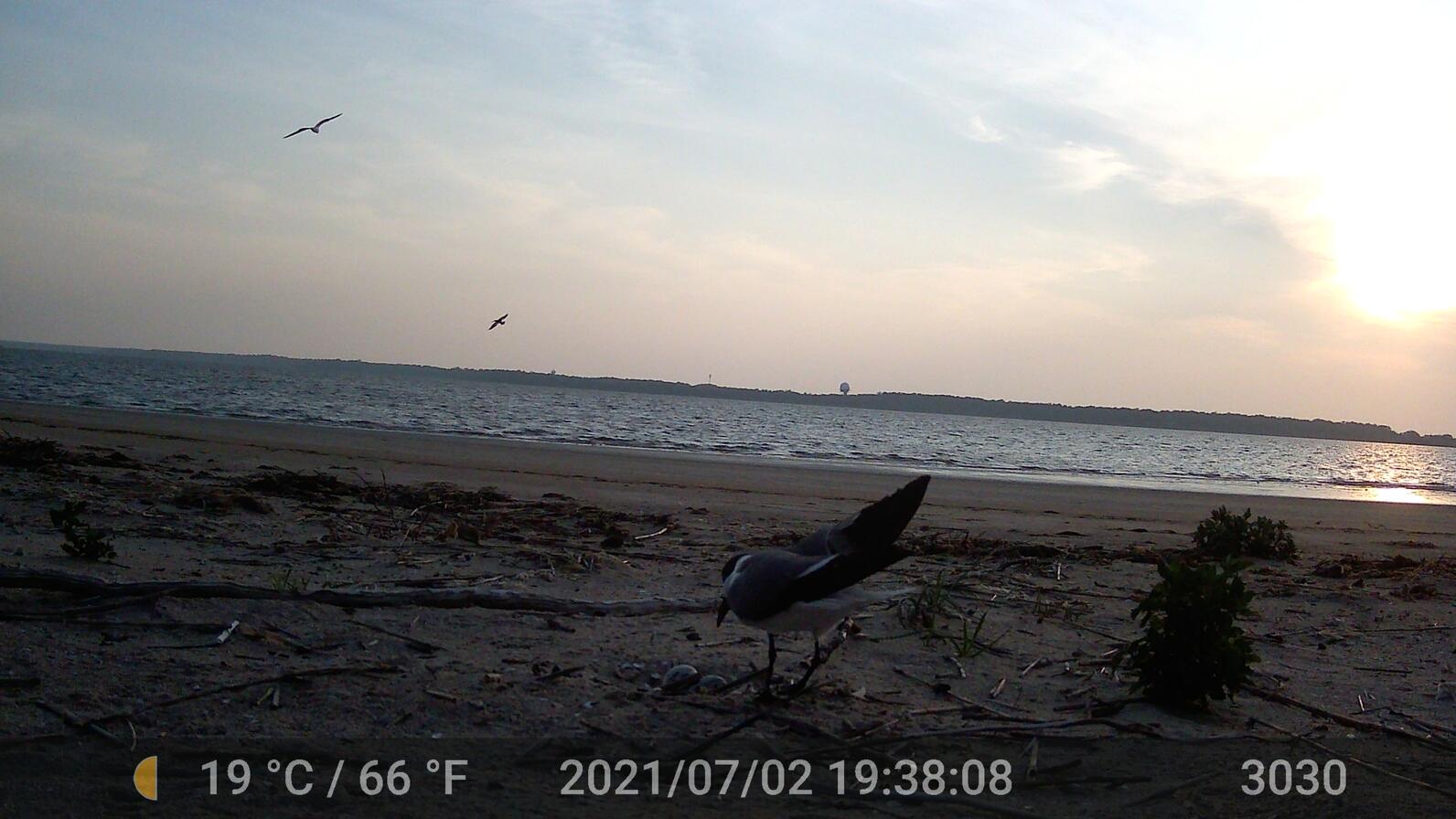
Storms and King Tides —King tides, or the extra high tides that arrive with every full and new moon, are becoming more extreme all along the coast. Nor’easters, hurricanes, and other storms are also raking the coast more frequently. These events often foiled oystercatchers’ nesting attempts in 2023. But the birds are steadfast. Here a parent incubates even after the shell rake its nest is on was reshaped by wind and waves. A climate future with lower carbon emissions will prevent the very worst scenarios for sea level rise and storm events, and that would be a win for birds and people.
Before the over wash event...
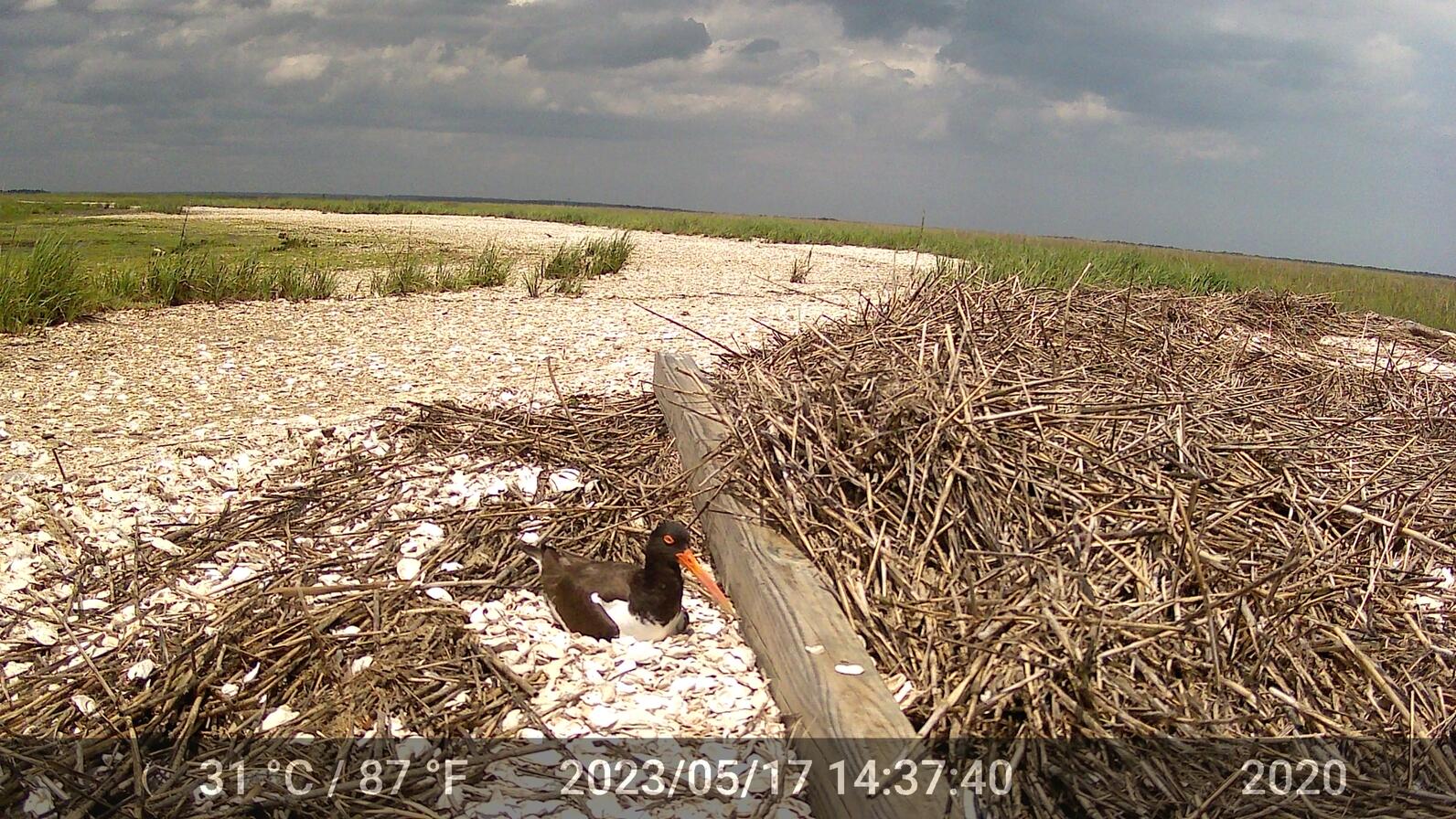
After the over wash event...
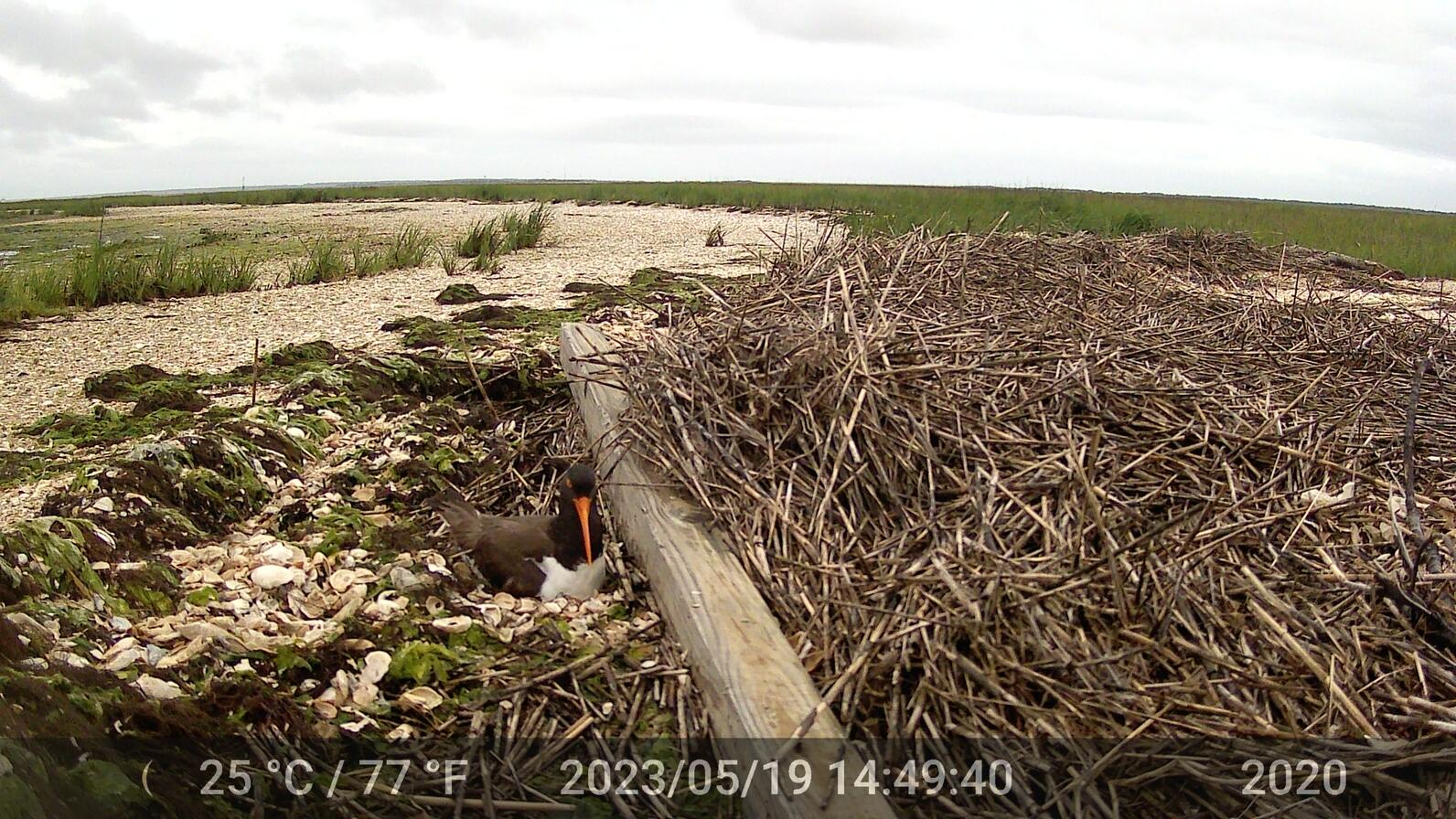
As challenging as raising a family at the water’s edge can be, the oystercatchers don't give up. And although some events are outside our control, these images demonstrate the importance first of monitoring nesting birds to understand their successes and failures, and then working to improve conditions—from seeking funding for enhancing natural shell rakes to advocating for clean energy policies, it all helps improve the outlook for oystercatchers and other coastal species.







